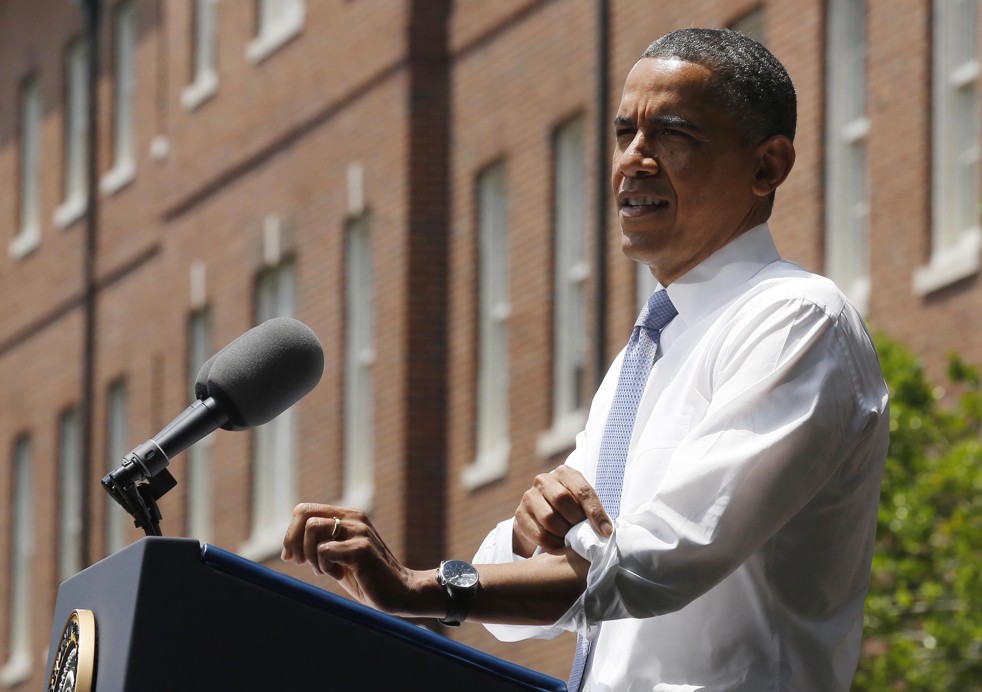Juliet Eilperin, Washington Post
Just a day before President Obama announced he would only approve theKeystone XL pipeline if it “does not significantly exacerbate the climate problem,” six environmental groups quietly lodged a protest with the State Department charging it would do exactly that.
The 48-page letter obtained by The Washington Post demands the State Department, which has jurisdiction over the pipeline permit, prepare a new supplemental environmental impact statement to take into account several new analyses that they say prove the project will speed heavy crude extraction in Canada’s oil sands region.
The State Department is currently responding to more than 1.2 million comments on the Supplemental Draft Environmental Impact Statement it issued March 1, which it plans to finalize this fall. In that document, the department suggested denial of TransCanada’s permit would have little overall climate impact because the oil would be extracted and shipped out anyway, largely by rail.
“Approval or denial of any one crude oil transport project, including the proposed Project, remains unlikely to significantly impact the rate of extraction in the oil sands, or the continued demand for heavy crude oil at refineries in the U.S.,” the draft assessment reads. “Limitations on pipeline transport would force more crude oil to be transported via other modes of transportation, such as rail which would probably (but not certainly) be more expensive.”
By contrast, the six advocacy groups–Bold Nebraska, Center for Biological Diversity, National Wildlife Federation, Natural Resources Defense Council, Oil Change International, and the Sierra Club–said recent evidence does not support this conclusion.
“Since the close of the comment period, evidence of inaccuracies and bias in the State Department’s review of Keystone XL has been steadily mounting,” says Doug Hayes, a Sierra Club attorney. “This new information demonstrates that the review relies on an overly-simplistic, outdated view of a rapidly-changing oil market.”
They cite several reasons for redoing the assessment’s climate analysis, including a Goldman Sachs report that questions the extent to which rail shipments can replace a pipeline slated to transport 830,000 barrels of crude per day; the Royal Bank of Canada’s estimate that denying the project would jeopardize $9.4 billion in oil sands development; and the fact that the Environmental Protection Agency filed comments in April suggesting the State Department downplayed the amount of greenhouse gas emissions linked to the project’s construction. EPA estimated the pipeline’s annual climate impact–taking into account the carbon intensity of Alberta’s oil compared to average crude oil–would be 18.7 million metric tons of carbon from the time of extraction to the time it reaches gas stations.
The groups also call on State Department officials to take into account the higher “social cost of carbon” the administration is now using, which aims to capture the negative climate impact of activities that release carbon into the atmosphere. This month the Office of Management and Budget raised that figure by roughly 60 percent.
Will the State Department do a new assessment? That remains to be seen, since the department is in the midst of finalizing its environmental impact statement, and it did not respond immediately to a request for comment Thursday.



